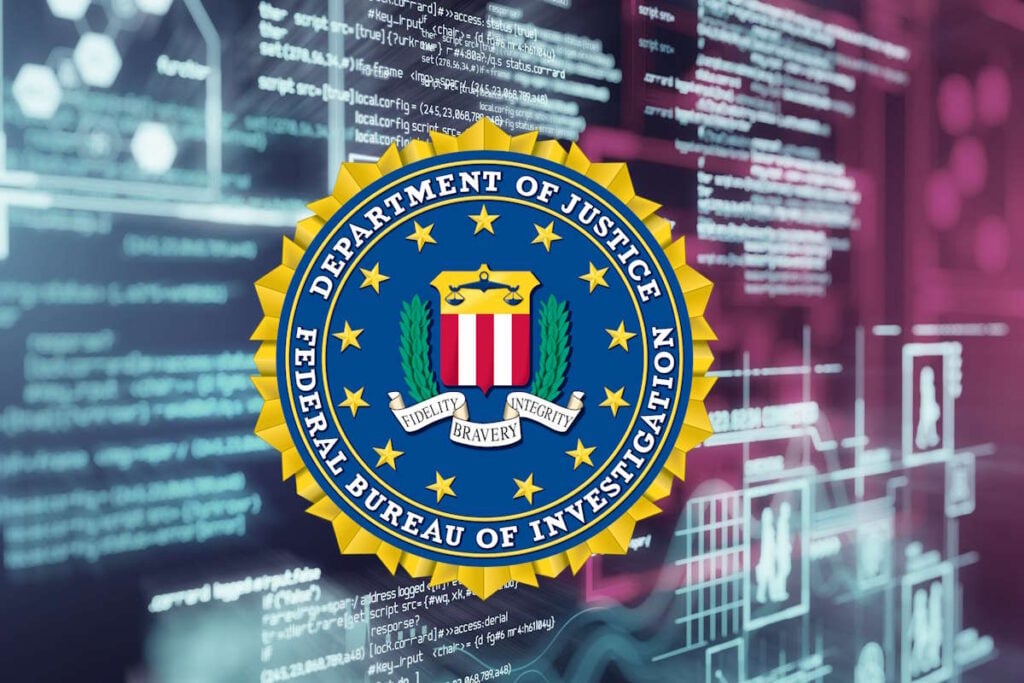
FBI Says Ransomware Victims Usually Dont Report
FBI says ransomware victims usually do not report – a shocking statistic, right? It’s a reality that paints a grim picture of the cybercrime landscape. Many victims, overwhelmed by fear, shame, or a sense of helplessness, choose to suffer in silence rather than face the potential hassle of reporting. This silence, however, allows cybercriminals to thrive, leaving a trail of financial and emotional devastation in their wake.
This post dives into the reasons behind this underreporting, explores the impact on law enforcement, and suggests ways to encourage victims to come forward and seek help.
We’ll examine the various reasons why victims stay quiet – from fear of reputational damage to the belief that reporting won’t make a difference. We’ll also look at the resources available to victims, dispelling the myth that reporting is a long, arduous process. Finally, we’ll discuss strategies to incentivize reporting and build a more supportive environment for those who have fallen prey to ransomware attacks.
The Scope of Underreporting

The FBI’s acknowledgment that ransomware victims rarely report attacks highlights a significant problem in cybersecurity. Understanding the reasons behind this underreporting is crucial for developing effective prevention and response strategies. The silence surrounding ransomware incidents creates a breeding ground for further attacks and prevents law enforcement from effectively tracking trends and apprehending perpetrators.The reasons for non-reporting are multifaceted and often intertwined.
Victims may fear reputational damage, believing that admitting to a ransomware attack will harm their business’s image and scare away clients. They might also lack confidence in law enforcement’s ability to help, feeling that reporting is a futile exercise. Furthermore, some victims may attempt to handle the situation themselves, hoping to avoid the costs and complexities associated with reporting and recovery, potentially exacerbating the problem.
Finally, the shame and embarrassment associated with falling victim to a cyberattack can be a significant deterrent to reporting.
Reasons for Non-Reporting
Victims often choose not to report ransomware attacks due to a combination of factors, including fear of reputational damage, perceived futility of reporting, a desire to handle the situation independently, and feelings of shame or embarrassment. These factors often outweigh the potential benefits of reporting, such as access to resources and assistance from law enforcement and cybersecurity experts. The lack of clear guidance and support from authorities also contributes to this hesitancy.
Many victims feel lost and overwhelmed in the aftermath of an attack, making the prospect of reporting an additional burden.
Potential Consequences of Non-Reporting
Remaining silent after a ransomware attack can have severe repercussions. Victims may face significant financial losses beyond the initial ransom payment, including lost productivity, legal fees, and damage to reputation. Without reporting, they lose access to potential resources and assistance from law enforcement and cybersecurity professionals, increasing the risk of future attacks. Furthermore, the lack of reporting prevents law enforcement from building a comprehensive understanding of ransomware trends, hindering the development of effective prevention strategies.
For example, a small business might choose not to report an attack, leading to a significant financial loss and the compromise of sensitive customer data. This lack of reporting prevents authorities from tracking the attackers and potentially preventing similar attacks on other businesses.
Types of Ransomware Attacks Likely to Go Unreported
Smaller businesses and individuals are more likely to remain silent after a ransomware attack than larger corporations. This is largely due to the limited resources and expertise available to them. Attacks targeting individuals, particularly those with limited technical knowledge, often go unreported due to a lack of awareness and understanding of reporting mechanisms. Similarly, attacks resulting in relatively small financial losses might be considered too insignificant to report, even though they represent a valuable data point for law enforcement in identifying broader attack patterns.
Ransomware attacks that involve the theft of sensitive personal data, such as medical records or financial information, might also be underreported due to the fear of further legal or regulatory repercussions.
The FBI reports that many ransomware victims don’t report attacks, often due to shame or fear of repercussions. This lack of reporting makes it harder to track trends, like the recent surge in phishing scams, which brings me to something equally concerning: I just read this article about Facebook potentially requesting bank account details and card transactions from users – check it out: facebook asking bank account info and card transactions of users.
This kind of data theft can lead to further financial crimes, making it even more crucial for people to report any suspicious activity, even if it feels embarrassing. Ultimately, silence only helps the criminals.
Hypothetical Scenario Illustrating the Decision-Making Process
Imagine a small bakery, “Sweet Surrender,” experiencing a ransomware attack that encrypts its financial records and customer database. The owner, Sarah, initially considers paying the ransom to restore access to her data, believing it’s the quickest solution. However, the ransom demand is substantial, and she’s unsure if she can afford it without jeopardizing the business’s future. She also worries about the potential reputational damage of admitting to a cyberattack.
She weighs the costs and risks of reporting – the potential disruption to business operations during an investigation, the legal and financial implications – against the potential benefits, such as assistance from the FBI and access to resources that could help prevent future attacks. Ultimately, the fear of financial ruin and the perceived complexity of reporting lead Sarah to attempt a self-recovery, leaving the incident unreported.
FBI Resources and Victim Support
The FBI plays a crucial role in combating ransomware attacks, but their involvement extends beyond investigations. They offer various resources and programs designed to help victims navigate the aftermath of a cyberattack, mitigate further damage, and potentially recover lost data or funds. Understanding these resources is vital for anyone who has fallen victim to ransomware. Knowing what assistance is available can significantly reduce the stress and financial burden associated with such incidents.The FBI’s approach to assisting ransomware victims is multifaceted, incorporating reporting mechanisms, investigative support, and public awareness campaigns.
While the FBI cannot directly recover lost data or funds, their expertise in identifying and disrupting ransomware networks can significantly impact the broader landscape and prevent future attacks. Furthermore, their investigative work can help identify perpetrators and potentially lead to the recovery of some stolen assets.
Reporting a Ransomware Attack to the FBI
Reporting a ransomware attack to the FBI is a crucial first step. This allows them to track trends, identify perpetrators, and potentially disrupt ransomware operations. While reporting doesn’t guarantee immediate recovery of data or funds, it contributes to the larger effort of combating cybercrime. The FBI encourages victims to report incidents through their Internet Crime Complaint Center (IC3).
This online portal allows victims to provide detailed information about the attack, including the type of ransomware used, the method of infection, and any demands made by the attackers. This information is then used by the FBI to build a comprehensive picture of ransomware activity and develop effective countermeasures.
Comparison of Reporting Mechanisms
The primary reporting mechanism is the IC3, which offers a convenient and secure online platform. Other avenues, such as contacting local FBI field offices directly, are also possible but may not be as efficient. The IC3 offers a centralized system that allows for better data analysis and coordination across different agencies. Direct contact with a local field office might be more appropriate for situations requiring immediate attention or involving physical threats, but generally, the IC3 is the recommended approach for reporting ransomware incidents.
The FBI’s finding that most ransomware victims don’t report attacks highlights a critical vulnerability. This lack of reporting makes it harder to track trends and develop effective defenses, especially as we increasingly rely on cloud services. Understanding the need for proactive security measures is crucial, which is why learning about solutions like bitglass and the rise of cloud security posture management is so important.
Ultimately, better security awareness, coupled with robust cloud security strategies, can help reduce the number of unreported ransomware incidents.
The effectiveness of both methods hinges on the victim’s ability to provide accurate and detailed information about the attack. The IC3, due to its structured reporting format, generally leads to more efficient processing and analysis of the data.
Steps to Take When Reporting a Ransomware Attack
The following table Artikels the recommended steps for victims who decide to report a ransomware attack:
| Step | Action | Details | Importance |
|---|---|---|---|
| 1 | Secure your systems | Disconnect from the internet, isolate infected devices. | Prevents further damage and data exfiltration. |
| 2 | Gather information | Collect details about the attack (ransomware name, infection method, ransom demand). | Provides crucial evidence for investigation. |
| 3 | Report to IC3 | Submit a detailed report through the FBI’s Internet Crime Complaint Center. | Enables the FBI to track trends and investigate perpetrators. |
| 4 | Preserve evidence | Do not delete any files or modify system settings. | Maintains the integrity of evidence for potential recovery or investigation. |
The Impact of Underreporting on Law Enforcement
The significant underreporting of ransomware attacks presents a formidable challenge to law enforcement agencies worldwide. This lack of visibility severely hampers their ability to effectively combat this growing cybercrime, hindering investigations, prosecutions, and the development of proactive prevention strategies. Understanding the scope of this problem is crucial to developing more effective responses.The obstacles hindering effective investigation and prosecution of ransomware perpetrators are multifaceted and interconnected.
These obstacles stem from a combination of factors related to victim behavior, the nature of the crime itself, and limitations within law enforcement capabilities.
Challenges in Investigation and Prosecution
The lack of reported incidents significantly limits law enforcement’s understanding of the ransomware landscape. Without comprehensive data on attack frequency, targets, tactics, and perpetrators, it becomes exceedingly difficult to identify trends, develop effective investigative strategies, and allocate resources efficiently. Furthermore, many victims are hesitant to report attacks due to concerns about reputational damage, financial losses, and the perceived ineffectiveness of law enforcement intervention.
This reluctance to report creates a “dark figure” of crime, obscuring the true scale of the problem and preventing the development of accurate risk assessments. Consequently, resources may be misallocated, focusing on less prevalent threats while neglecting the pervasive issue of ransomware.
Obstacles to Effective Resource Allocation
Underreporting directly impacts resource allocation within law enforcement. When agencies lack a clear picture of the problem’s magnitude, they struggle to prioritize ransomware investigations and allocate sufficient personnel, funding, and technological resources to combat it effectively. This can lead to a reactive, rather than proactive, approach, responding to incidents individually rather than strategically addressing the underlying causes and vulnerabilities.
For example, a police department might dedicate more resources to street crime if ransomware reports are scarce, even if the financial impact of ransomware is significantly higher in their jurisdiction. This misallocation of resources weakens the overall effectiveness of law enforcement’s response to cybercrime.
Impact on Crime Prevention Strategies
The inability to accurately assess the prevalence and characteristics of ransomware attacks severely hampers the development of effective crime prevention strategies. Without robust data, it’s difficult to identify vulnerabilities, develop targeted prevention programs, and educate potential victims on best practices for mitigating risks. This lack of information prevents the creation of effective public awareness campaigns, leading to continued vulnerability and increased success rates for ransomware perpetrators.
For instance, if law enforcement doesn’t have accurate data on the types of organizations most frequently targeted, they can’t develop tailored security awareness training for those specific sectors.
Economic and Societal Costs
The silent epidemic of unreported ransomware attacks inflicts a staggering economic and societal toll, far exceeding the readily visible figures of reported incidents. The lack of transparency creates a shadow economy of cybercrime, hindering effective mitigation strategies and leaving businesses and individuals vulnerable to increasingly sophisticated attacks. Understanding the true cost requires acknowledging the significant gap between reported and actual ransomware incidents.The economic impact of unreported ransomware attacks is profound and multifaceted.
While official statistics primarily reflect reported cases, the reality is that a far greater number of attacks go unreported, driven by factors such as shame, fear of reputational damage, and the belief that reporting won’t lead to any meaningful recovery. This underreporting significantly skews the perception of the ransomware threat landscape, leading to underinvestment in cybersecurity infrastructure and a lack of comprehensive policy responses.
For example, a small business might choose to pay a ransom quietly rather than risk bankruptcy by publicly disclosing a breach, thus contributing to the silent growth of the problem.
The Financial Burden of Unreported Attacks, Fbi says ransomware victims usually do not report
Consider a hypothetical scenario: A small manufacturing company experiences a ransomware attack, encrypting its critical production data. They estimate the cost of downtime, lost productivity, and potential legal ramifications at $50,000, but decide against reporting the incident to avoid negative publicity. This single unreported event represents a significant loss, compounding the already substantial economic burden imposed by reported attacks.
If we extrapolate this scenario across thousands of similarly affected businesses, the overall financial impact becomes staggering. One study estimated that unreported attacks could cost businesses 10 times more than reported ones, indicating a potential economic crisis lurking beneath the surface of official statistics. While precise figures are difficult to obtain due to the inherent nature of underreporting, it’s clear that the economic impact is far greater than reported figures suggest.
Societal Consequences of Underreporting
The societal consequences of underreporting extend beyond mere financial losses. The widespread failure to report incidents erodes public trust in digital systems and institutions. This loss of trust can manifest in several ways: reduced online activity, reluctance to adopt new technologies, and a general sense of insecurity and vulnerability in the digital world. The lack of transparency also hampers the development of effective cybersecurity policies and practices, as policymakers lack the comprehensive data necessary to create robust and effective solutions.
The continuous, silent erosion of trust in digital systems creates a climate of fear and uncertainty, negatively impacting economic productivity, social interaction, and overall well-being.
Indirect Costs of Unreported Ransomware Incidents
The direct costs of ransomware attacks, such as ransom payments and data recovery expenses, are only part of the story. Unreported incidents also incur significant indirect costs. These hidden expenses often outweigh the direct costs and significantly impact the long-term financial health of affected entities.
- Reputational damage: Even if an attack remains unreported, news of a data breach can still leak, leading to reputational harm and loss of customer trust.
- Loss of business opportunities: Downtime and disruption caused by ransomware attacks can lead to missed deadlines, lost contracts, and reduced competitiveness.
- Increased insurance premiums: Insurance companies may increase premiums for businesses with a history of cybersecurity incidents, even if those incidents were unreported.
- Legal and regulatory fines: Failure to comply with data protection regulations can result in substantial fines, even if the breach was unreported.
- Decreased employee morale and productivity: A ransomware attack can create a climate of fear and uncertainty, negatively impacting employee morale and productivity.
Incentivizing Reporting

The pervasive underreporting of ransomware attacks significantly hinders law enforcement efforts and allows cybercriminals to thrive. To combat this, a multi-pronged approach focusing on incentivizing reporting is crucial. This involves not only offering tangible rewards but also fostering a culture of trust and support for victims. A shift in perspective, from viewing reporting as an admission of failure to recognizing it as a vital step in collective security, is essential.Strategies to encourage reporting need to address the primary concerns victims have: fear of reputational damage, the complexity of reporting procedures, and the perceived lack of assistance following a report.
A successful incentive program must directly counter these anxieties.
Financial Incentives and Reward Programs
Offering financial rewards for reporting ransomware attacks, especially those leading to successful investigations and prosecutions, can be a powerful motivator. This could take the form of a tiered system, with larger rewards offered for providing critical information that helps disrupt ransomware operations or identify the perpetrators. For example, a program could offer a percentage of recovered funds or a fixed amount based on the impact of the attack and the quality of the information provided.
This needs to be carefully balanced with the resources available and the potential for fraudulent claims. A robust verification process would be crucial to ensure the legitimacy of each claim.
Streamlined Reporting Procedures and Victim Support
Simplifying the reporting process is paramount. A user-friendly online portal, offering multilingual support and clear instructions, would drastically reduce the barrier to entry. This portal should also offer immediate access to victim support resources, such as cybersecurity experts who can provide technical assistance and guidance on data recovery and mitigation strategies. The promise of proactive support, rather than just reactive investigation, would significantly encourage reporting.
The experience of reporting should be viewed as a positive one, where the victim is guided through the process and given the resources needed to recover and prevent future attacks.
Public Awareness Campaigns and Educational Initiatives
Successful initiatives by other agencies often combine financial incentives with robust public awareness campaigns. For example, some organizations have launched targeted campaigns emphasizing the collective responsibility in combating cybercrime and the importance of reporting to protect the broader community. These campaigns often feature testimonials from victims who have successfully recovered with the help of law enforcement, showcasing the positive outcomes of reporting.
It’s shocking how often the FBI reports that ransomware victims don’t report attacks; they’re often ashamed or unsure what to do. Building robust, secure systems is crucial, and that’s where understanding the evolving landscape of application development, like what’s discussed in this insightful article on domino app dev the low code and pro code future , becomes vital.
Ultimately, better security practices could encourage more reporting and help combat this growing problem.
Educational initiatives aimed at businesses and individuals on recognizing and responding to ransomware attacks are equally crucial, equipping potential victims with the knowledge and confidence to report incidents effectively. Such initiatives could involve workshops, online training modules, and readily accessible informational materials.
Improved Victim Support Leading to Increased Reporting
Comprehensive victim support is not merely a byproduct of a successful incentive program; it’s the foundation. A dedicated team of support professionals, offering not only technical assistance but also emotional and psychological support, is essential. Victims often experience significant stress, anxiety, and even shame following a ransomware attack. Providing access to mental health resources, financial assistance, and legal counsel can significantly alleviate this burden and encourage more victims to come forward.
The focus should be on empowering victims to recover and rebuild, reinforcing the message that reporting is a step towards healing and collective security.
Illustrative Case Studies (Hypothetical)
Understanding the complexities surrounding ransomware attacks requires examining real-world scenarios. While the FBI’s statistics highlight underreporting, hypothetical case studies can illuminate the diverse factors influencing victims’ decisions and the resulting consequences. These examples, while fictional, reflect common patterns observed in actual ransomware incidents.
Case Study 1: The Small Business Owner
This case study focuses on Sarah, the owner of a small bakery. Her business relies heavily on a single computer system for managing orders, inventory, and accounting. A ransomware attack encrypted her entire system, demanding a relatively small ransom of $500. Sarah, facing potential financial ruin if she couldn’t quickly restore her data, decided not to report the attack to law enforcement.
She feared the negative publicity would damage her business reputation, potentially driving away customers. Further, she felt overwhelmed and lacked confidence in law enforcement’s ability to help recover her data quickly enough. The consequences of her decision included paying the ransom (albeit a small amount), experiencing significant downtime, and the ongoing risk of future attacks due to the unaddressed security vulnerabilities.
Case Study 2: The Large Corporation
This case study examines Acme Corp, a large multinational corporation. A sophisticated ransomware attack targeting their network encrypted sensitive customer data and intellectual property. The ransom demand was substantial, reaching millions of dollars. Acme Corp, with a dedicated cybersecurity team and legal counsel, chose to report the attack to the FBI and other relevant authorities. They understood the legal and reputational ramifications of not reporting, particularly given the scale of the breach and the potential for regulatory fines.
While the incident resulted in significant financial losses and reputational damage, reporting the attack allowed them to leverage law enforcement resources, engage in incident response planning, and potentially recover some data. Further, reporting fostered transparency and allowed them to communicate proactively with stakeholders.
Case Study 3: The Individual User
This case study centers on David, an individual whose personal computer was infected with ransomware after clicking a malicious link in a phishing email. The ransom demand was relatively low, around $200. David, feeling frustrated and overwhelmed, and lacking technical expertise, chose not to report the incident. He felt the cost and effort of reporting far outweighed the value of his personal data.
He believed the lost data wasn’t critically important enough to warrant official involvement. The consequences of his decision included paying the ransom, losing some personal files, and continuing to use an insecure computer, leaving him vulnerable to future attacks.
| Victim Profile | Type of Attack | Decision to Report | Consequences |
|---|---|---|---|
| Sarah, Small Bakery Owner | Encryption Ransomware | No | Paid ransom, significant downtime, reputational risk, continued vulnerability |
| Acme Corp, Large Corporation | Sophisticated Network Attack | Yes | Significant financial losses, reputational damage, but access to law enforcement resources and improved security |
| David, Individual User | Phishing-based Ransomware | No | Paid ransom, data loss, continued vulnerability |
Last Recap
The silence surrounding ransomware attacks is deafening, and it’s costing us all. While the FBI’s statement that most victims don’t report is alarming, it also presents an opportunity. By understanding the reasons behind this underreporting, we can develop better support systems and encourage victims to come forward. This isn’t just about catching criminals; it’s about empowering victims, fostering trust, and building a more resilient digital world.
Let’s break the silence and work together to combat this growing threat.
FAQ Insights: Fbi Says Ransomware Victims Usually Do Not Report
What types of ransomware are most likely to go unreported?
Attacks targeting smaller businesses or individuals are often underreported due to limited resources and perceived lack of impact on a larger scale.
What are the potential consequences of not reporting a ransomware attack?
Besides the immediate financial loss, failure to report hinders law enforcement’s ability to track and prosecute criminals, leading to more attacks. It also prevents the development of effective preventative measures.
Is my data safe if I don’t report a ransomware attack?
No. Even if you don’t report, the data breach remains. You should still take steps to secure your systems and prevent future attacks, even if you chose not to report.
What happens if I report a ransomware attack to the FBI?
The FBI will likely investigate the attack, attempt to identify the perpetrators, and offer advice on how to mitigate future risks. They may also collaborate with other agencies to coordinate a wider response.





